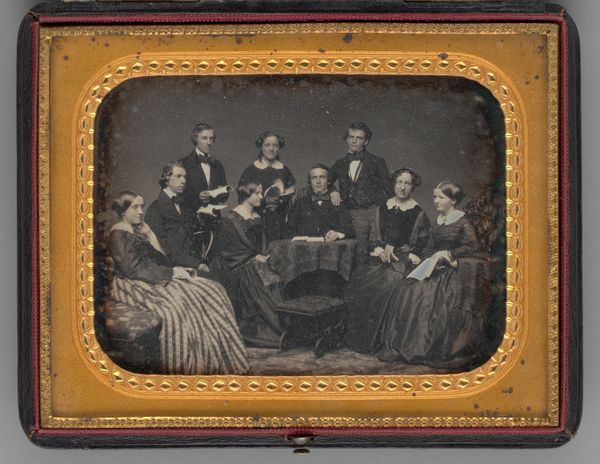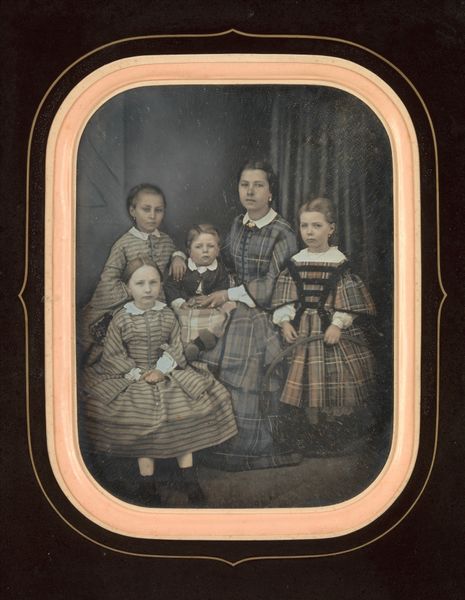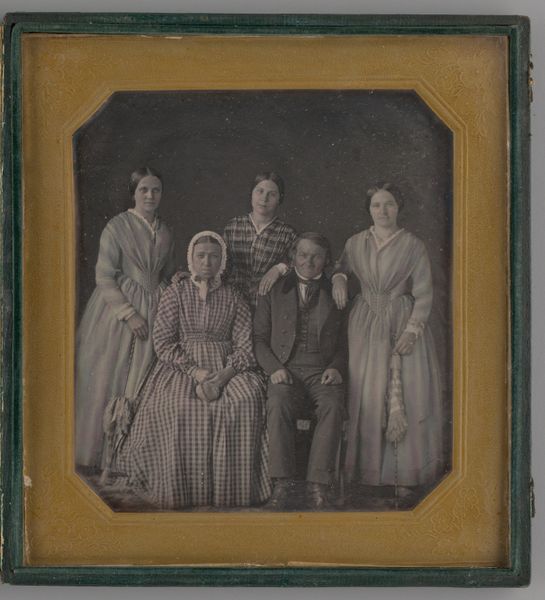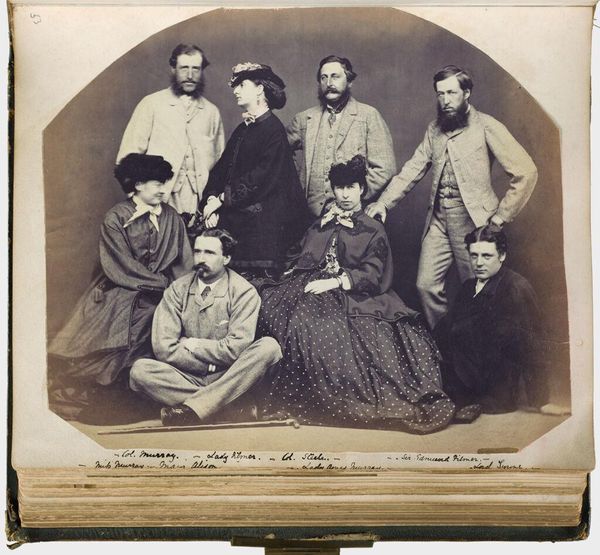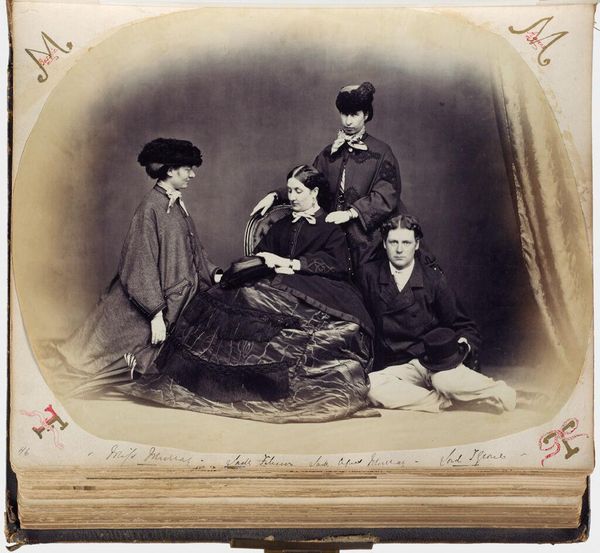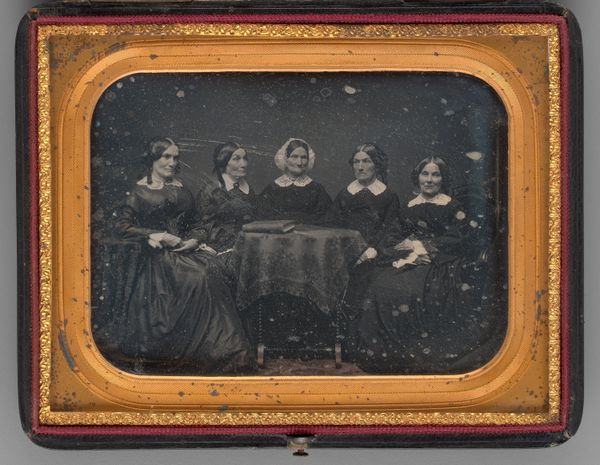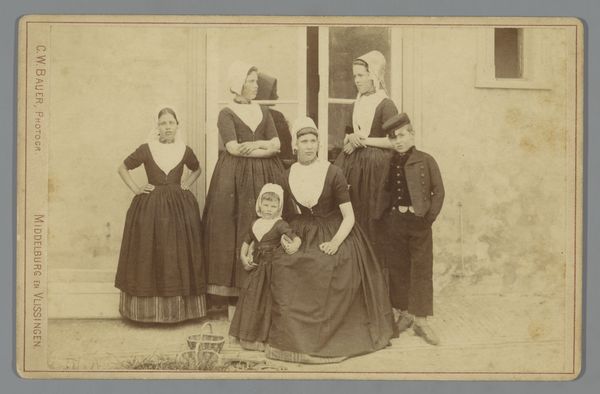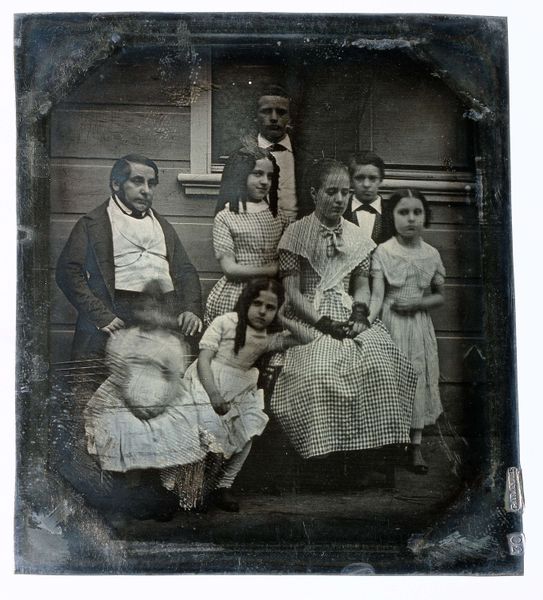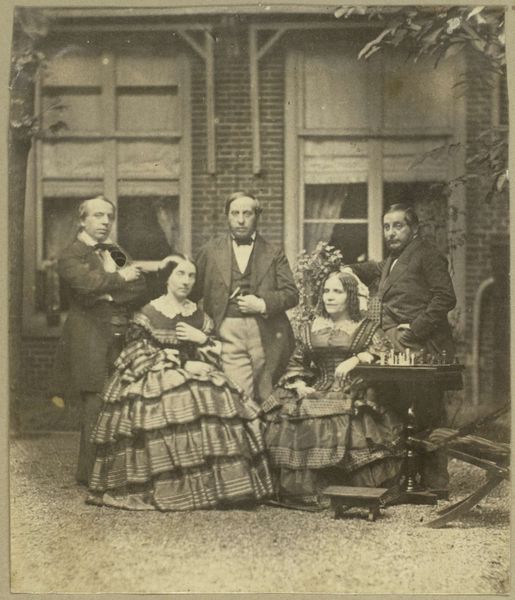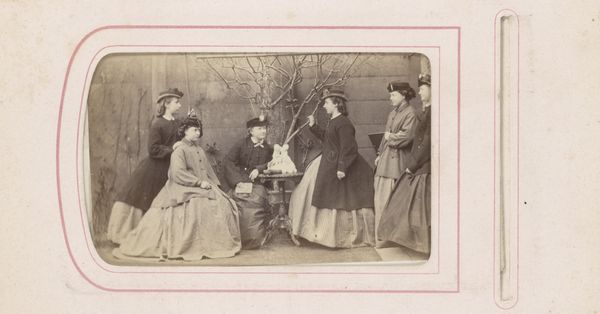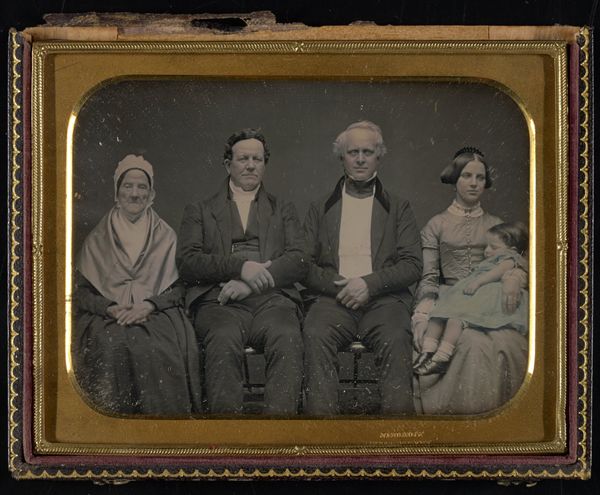
Dimensions: image (visible): 7.6 × 8.8 cm (3 × 3 7/16 in.) mat: 12 × 14.2 cm (4 3/4 × 5 9/16 in.) overall: 12.8 × 15 × 0.5 cm (5 1/16 × 5 7/8 × 3/16 in.)
Copyright: National Gallery of Art: CC0 1.0
Curator: Let's turn our attention to this compelling group portrait of Queen Victoria with several of her children, created by William Edward Kilburn around 1852. It's an albumen print, a type of photography very popular at the time. Editor: The immediate impression is one of formal rigidity, but also vulnerability. The queen, although centrally placed, almost fades into the background, shrouded in dark fabric and lace. There is an aura of constraint around everyone. Curator: Indeed. The photograph’s composition speaks volumes. It presents Victoria not just as a monarch, but emphasizes her role as a mother, reinforcing the image of a caring, domestic figure—a deliberate construction during a time of shifting social values and political scrutiny. Editor: And observe the symbolism embedded within the image. Victoria’s positioning suggests authority, but there's also the recurring motif of the child lying across her lap, an unmistakable reference to traditional depictions of the Madonna and Child, associating her with purity and maternal devotion. Curator: The artist, Kilburn, was very savvy about conveying psychological and cultural themes. We've long understood how the Victorian era used images to project power. But even seemingly casual elements, like the child with her back to us or another with the handbag, feel deliberate. Perhaps hinting at complexities beneath the surface of royalty. Editor: It strikes me that these early photographs served to domesticize the monarchy. Painting had always rendered them larger than life. Photography brought a sense of reality to their role and lives, crafting accessibility through the visible image. Still very carefully staged, of course! Curator: Certainly a different tone from centuries of portraiture prior, showing their engagement with more populist, sentimental approaches that gained momentum through the 19th century. It’s a fascinating demonstration of image management. Editor: And even now, that original sentiment remains surprisingly evocative and complex, even amidst its evident manipulations.
Comments
No comments
Be the first to comment and join the conversation on the ultimate creative platform.
